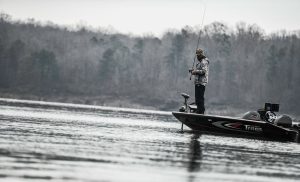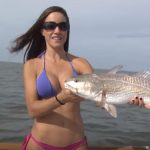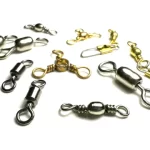As winter approaches and temperatures plummet, many anglers consider storing their gear until spring. However, cold-weather fishing offers unique opportunities, particularly because fewer anglers venture out, and freshwater species often group together, increasing the chances of a successful catch. To make the most of winter fishing, preparation is key. Here are five essential tips to ensure a productive and enjoyable cold-weather fishing trip.
1. Choose the Right Location
Location is always crucial, but it becomes even more important in winter. Start by researching prime fishing spots through your state’s Department of Natural Resources website, which provides updated information on fish populations, seasonal patterns, and creel limits. National resources like Ultimatebass.com also offer valuable insights.
Avoid rivers or lakes with strong currents; not only are these areas less productive in winter, but they can also pose safety risks. Focus on calmer waters where fish are likely to congregate during colder months.
2. Time the Weather Wisely
Unlike summer, winter fishing isn’t suited to a set schedule. Fish behavior is heavily influenced by weather patterns, particularly cold fronts. The best time to fish is often right before a front passes, as fish tend to feed actively during this period.
Additionally, the optimal window for winter fishing is between 10 a.m. and 4 p.m. Early mornings and late evenings are generally less productive due to lower temperatures, which reduce fish activity.
3. Use the Right Gear
Winter fishing demands well-maintained equipment. Cold temperatures can stiffen reel bearings and thicken old oil and grease, so tune up your reels before heading out. If you’re unsure how to do this, professional repair shops can help. A little investment now can prevent disappointment later.
Pay attention to your fishing line as well. Ice accumulation can hinder line movement through rod guides. Using a line conditioner can prevent tangles and freezing.
Don’t forget to prepare for the cold. Insulated, waterproof boots and gloves are essential. Consider wearing fingerless gloves for better dexterity. Layer up with thermal underwear, thick socks, a quality hat, and a waterproof coat. For extra protection, waterproofing sprays can add an additional shield against moisture.

4. Select the Right Bait
Lures that work well in warmer months may not be as effective in cold weather. Fish and their prey move more slowly in winter, so live bait often outperforms artificial lures. Live bait’s natural movement in cold water is more enticing to sluggish fish.
If using lures, opt for ones with hair or feathers, as these maintain action in colder water. Smaller lures, around 2-3 inches, are more appealing to fish with reduced metabolisms. Adding attractants to soft plastic lures can also encourage bites and keep fish hooked longer.
5. Prioritize Safety
Winter fishing requires extra caution. According to the U.S. Coast Guard, January and February see the highest number of boating fatalities. Always fish with a partner. Falling into cold water can shock the system, cause muscle cramps, and lead to hypothermia, making self-rescue difficult.
Leave a float plan with someone you trust, and establish regular check-ins. If plans change, inform them immediately. Wear synthetic or wool layers instead of cotton, as cotton retains moisture and can lead to hypothermia. Hand and foot warmers, such as Hothands, can keep extremities warm for hours.
Always wear a life jacket over your coat, and consider adding a boarding ladder or rope with loops to help you get back on board if you fall overboard. Bring high-energy snacks, like granola bars, and a thermos of hot drinks or soup to stay warm and energized.
Cold-Weather Fishing: A Rewarding Challenge
With the right preparation and mindset, winter fishing can be just as rewarding as summer trips. By choosing the best location, timing the weather, maintaining your gear, selecting appropriate bait, and prioritizing safety, you’ll set yourself up for success—and perhaps even some of the best catches of the year.
Image/Source: mossyoak





